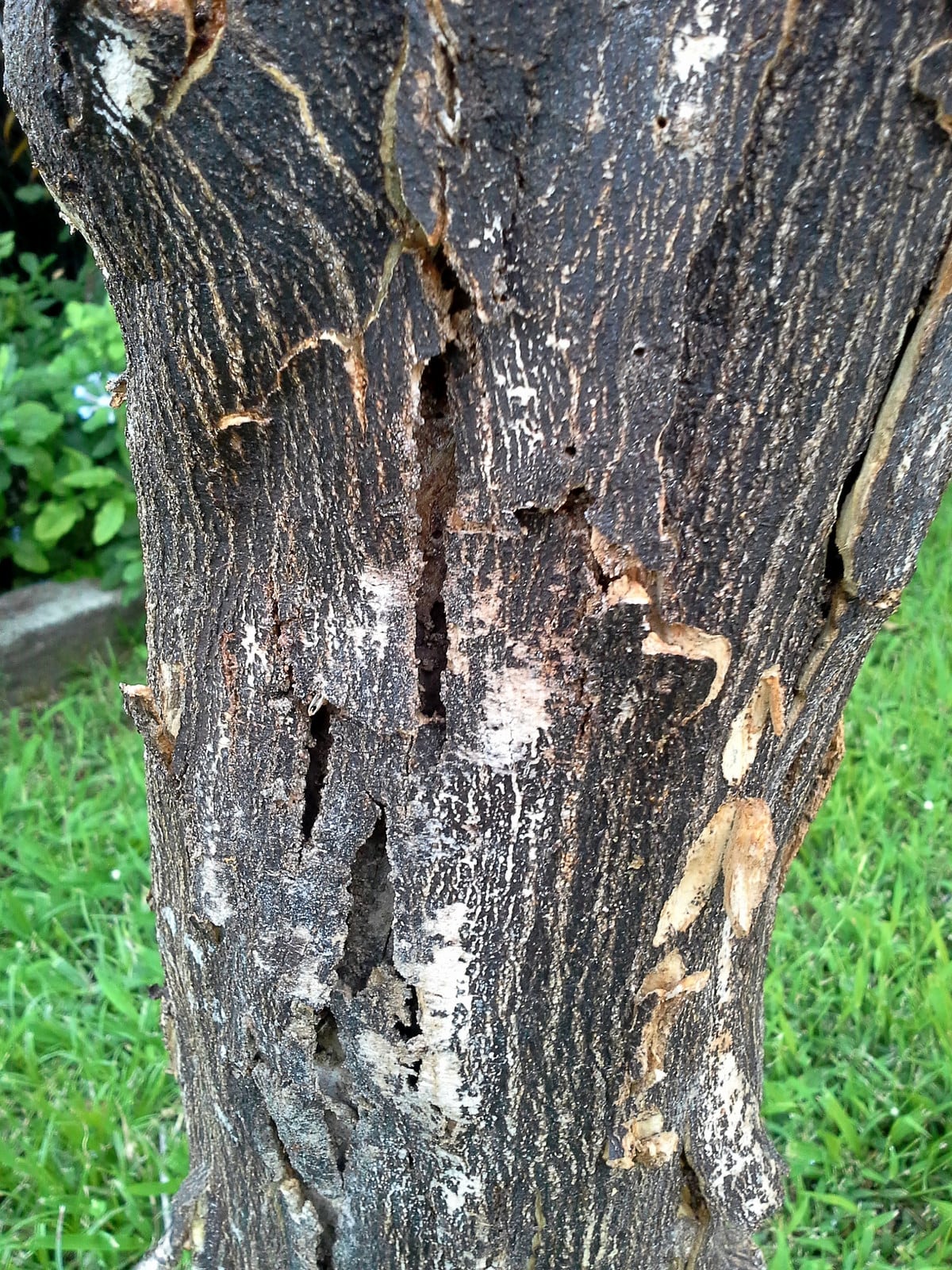Phytophthora Root Rot In Citrus – What Causes Citrus Feeder Root Rot


Citrus feeder root rot is a frustrating problem for orchard owners and those who grow citrus in the home landscape. Learning how this problem occurs and what can be done about it is your first step in its prevention and treatment.
Citrus Phytophthora Info
Feeder root rot of citrus causes a slow decline of the tree. Citrus root weevils sometimes attack feeder roots and encourage the progression of decline. Citrus trees with feeder root rot may also display damage on the trunk. At first, you may notice leaves yellowing and dropping. If the trunk stays wet, the water mold (Phytophthora parasitica) can spread and cause significantly more damage. Severe cases may cause defoliation of the entire tree. Trees are weakened, they deplete their reserves, and fruit becomes smaller and eventually the tree stops producing. Phytophthora root rot is most often found on citrus trees that are overwatered and have cuts from lawn equipment, such as from a weed whacker. This tool creates a perfect opening for the water mold (previously labeled a fungus) to enter. Damage from mowers and jagged cuts from dull tools may leave an opening for the water mold pathogen to enter.
Treating Citrus Trees with Feeder Root Rot
The phytophthora water mold is not uncommon in orchards, as the pathogens are soil-borne and found in many areas where citrus trees grow. Trees planted on lawns that get too much water are susceptible. Improve their drainage, if possible. Those that have developed a minor case of citrus phytophthora may recover if water is withheld and provided less often. Remove trees that are severely infected with citrus phytophthora and fumigate the ground before anything else is planted there, as the pathogen remains in the soil. If you have an orchard, treat citrus trees with feeder root rot selectively. Also, check cultural issues, such as improving drainage and providing less frequent irrigation throughout. If one of your trees appears stressed, dig down to get a look at the roots and send a soil sample to test for P. parasitica or P. citrophthora. Infected roots often look stringy. If the test is positive, fumigation may be feasible if no other adverse conditions exist. When new plantings are necessary, use trees with a rootstock resistant to phytophthora root rot. Also consider the rootstocks’ resistance to cold, nematodes, and other diseases, According to UC IPM, “The most tolerant rootstocks are trifoliate orange, swingle citrumelo, citrange,and Alemow.”
Sign up for the Gardening Know How newsletter today and receive a free copy of our e-book "How to Grow Delicious Tomatoes".

Becca Badgett was a regular contributor to Gardening Know How for ten years. Co-author of the book How to Grow an EMERGENCY Garden, Becca specializes in succulent and cactus gardening.